| The Mid Continent Railway
Historical Society has operated steam trains at North Freedom since 1963. It
runs vintage rolling stock on a branch line opened in 1903 to serve local
iron mines. The railway portrays the golden age of railroading, when
railroads brought prosperity to many otherwise isolated communities. | 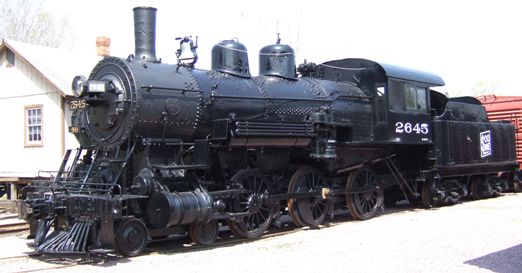 |
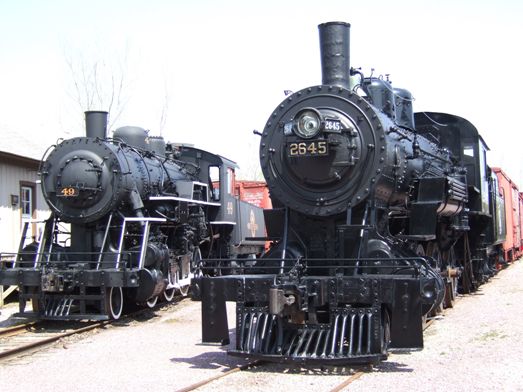 |
Unlike the collections of many such societies, there are not huge numbers of
basically wrecks which could never be resurrected. These two mid sized
locomotives look cared for although whether they are actually in running
order I don't know. |
| The society does have a
number of passenger cars without which it could never hope to make enough
money to survive. I was surprised to see this Lackawanna car since the last
ones we saw like this were in Pennsylvania over 1000 miles to the east. | 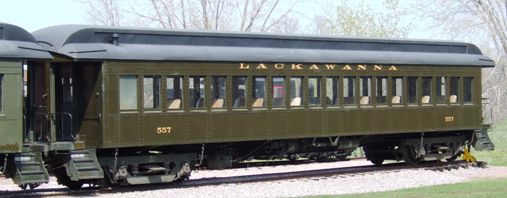 |
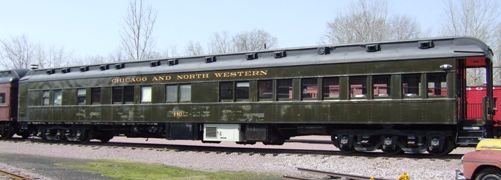 |
Chicago and North Western is much more to be expected. Strange that they
should use the almost the same paint colour. Perhaps it was fashionable at
the turn of the century, or more hardwearing, or maybe just cheaper. |
| They did use cars on the
railways extensively in the US, much more so than in Europe. I'm sure one of
my old car buff friends will identify this one in due course. | 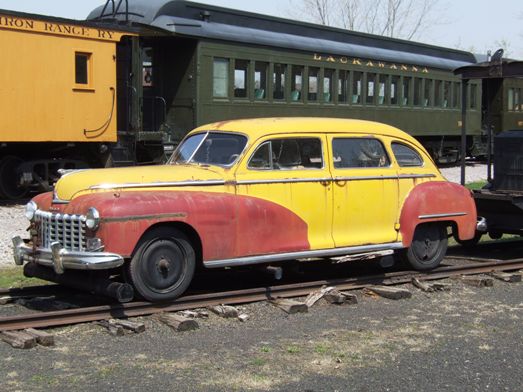 |
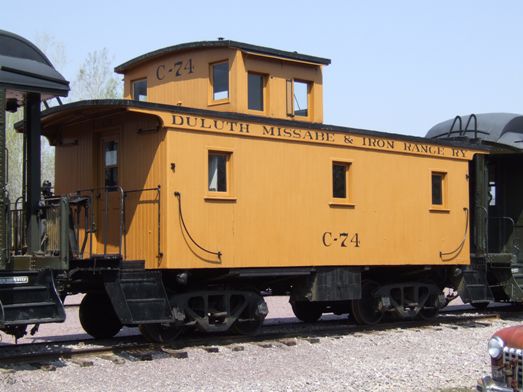 |
The commonest freight vehicle to survive on these old railways is the
caboose, and here is no exception. There must be 20 of different types and
railroads in the yards. Today they are often used as temporary accommodation
for volunteers. |
| They have renovated some
old freight rolling stock and it did look quite smart. The SOO line was a
major railroad in this part of the US. | 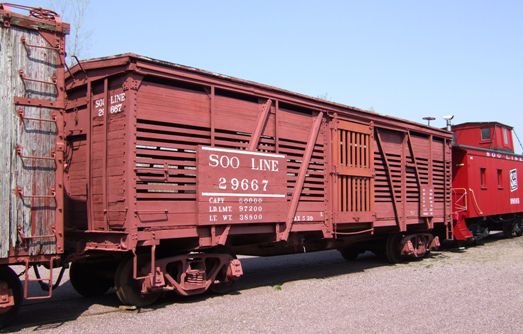 |
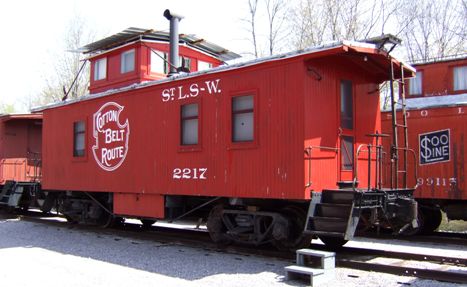 |
Another caboose, this time from the St Louis (Missouri) and Western Line,
often called the Cotton Belt Line. Behind is another SOO Line caboose. |
| Now this was a find,
although not that surprising. It is a Shay locomotive built by Lima in 1902.
They were widely used on temporary lines built by the lumber companies
logging the forests. Instead of having side conn rods to transmit the power
from the cylinders to the wheels, the conn rods are vertical and drive a
horizontal shaft to bevel gears on the wheels. It made them very flexible
permitting the wheels to follow the very uneven temporary tracks in use. I
think they are a marvellous piece of engineering ingenuity. | 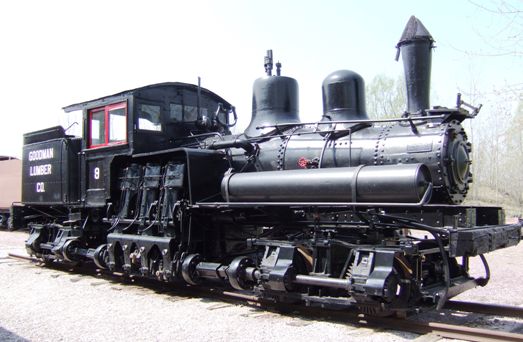 |
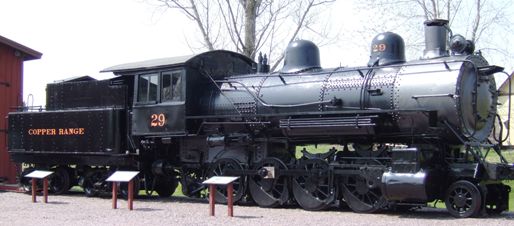 |
This 2-8-0 engine, with a large boiler but otherwise small, has been
restored cosmetically but is unlikely ever to run again since repair and
pressure certification of her boiler would cost over $1 million. No 29 was
one of 12 locos built by New York's ALCO company in 1899 for the Copper
Range Railroad to move ore on Michigan's Keeweenaw peninsula to the ports on
Lake Superior. It was retired in 1959 but was reused in the 1970s on tourist
trains. It was finally moved here in 2004 in a very complex road journey
which took seven days and required the boiler to be separated from the
wheels. |
| Steam trains need water
and this was a standard design common all over the US, and no doubt
featuring in many western movies. | 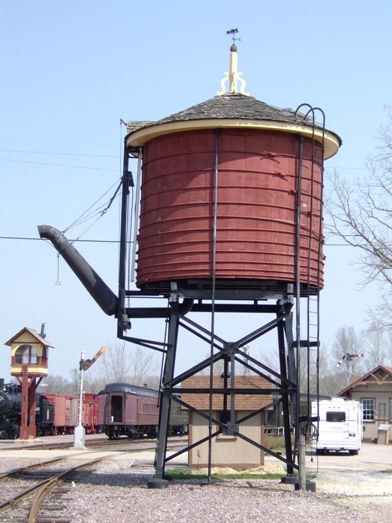 |
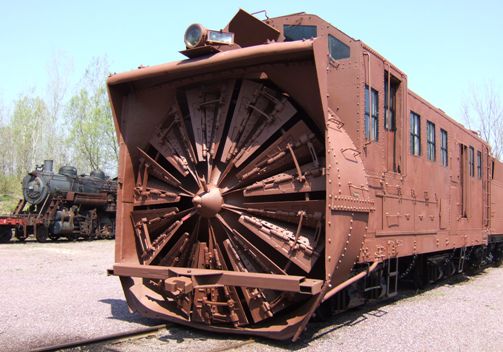 |
More unusual, even rare, is this snow blower. There were many different
varieties used in this part of the world where heavy snowfall each winter is
the norm. This one looks in excellent condition, but it is amazing what you
can do with paint and filler. This is probably 100 years old. |
| Another piece of
equipment which seems to survive well is the steam crane, although I suspect
that few now have safety certificates to lift like they used to. This
society has two, of which this is the better preserved. | 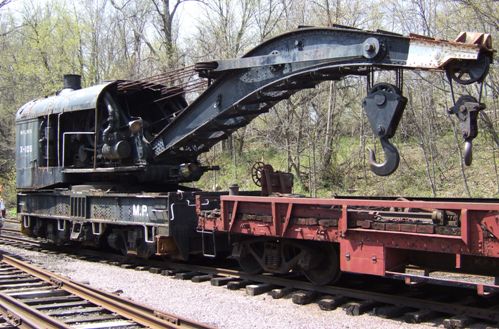 |
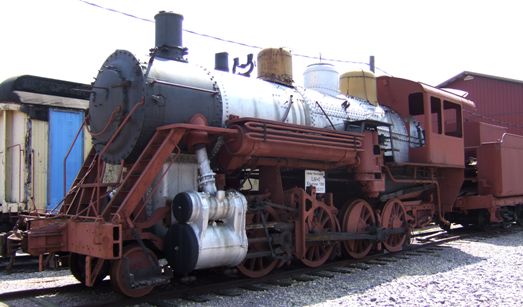 |
There is renovation work in progress as this engine shows. There are several
others still waiting attention. |
| Finally there is a shed
housing a number of passenger and baggage cars which have already been
renovated just as you would find in many museums. Overall I was very
impressed with this railroad museum which is basically in the back of
beyond. It deserves to be more widely visited than I suspect it is. It is of
particular note when you read about the National Railroad Museum in Green
Bay which we visit in a few days' time. | 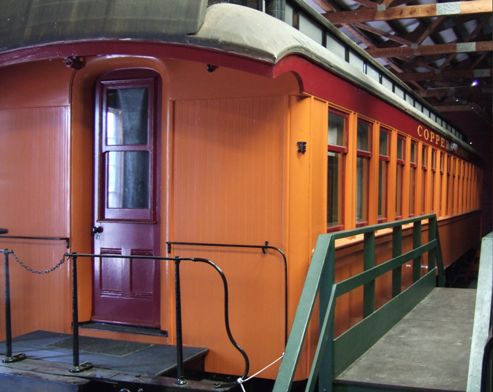 |
|